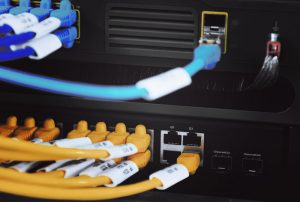What are Unified Communications?

Unified Communications (UC) is in reference to a phone system that “unifies” multiple communication methods within businesses.
Your business most likely communicates in several ways: phone calls, video conferencing, IM’s, e-mail, SMS, fax, etc.
A unified communication service gathers each way your business communicates and allows them “talk” to one another, so they can work collaboratively in one system – enabling your business to work a lot more efficient.
Today’s office communications need connectivity, mobility, and essential features for different users. And unified communications services bring together all of these modern capabilities and more.
Advantages of Unified Communications Services
Unified communication services offer a competitive advantage to businesses by decreasing the number of individual devices, platforms, and solutions they are required to communicate with one another.
A lot of businesses are choosing unified communication services over conventional phone systems since it’s a easier way to future proof their investment and keep up with technological advances.
Here are a few of the main advantages unified communication services has to offer:
- Increased efficiency
- Decreased costs
- Increased earning
- Higher quality customer service
Features of Unified Communications Services
Mobility
Mobility enables you to stay connected no matter where you or your employees are at. Using your office extension, you can make and take calls, chat, text, etc. with softphone applications.
Online User Interface
Many unified communication services platforms offer online interfaces that offer total call control from web browsers, providing users with the ability to individualize phone settings, voicemail, etc.
Presence
Presence notifies others to know if a specific user is available for communication. These notifications comprise of Active, Do Not Disturb, Out of the Office.
Unified Messaging
Using unified messaging, users can control a lot of types of messages from a single application and change communication modes as necessary.
Fax Assistance
Using a unified communication services system, faxes get received by the system and then re-routed to it’s intended recipient as an attachment of an e-mail. This method is similar on desktop and mobile devices.
Conferencing
Conferencing allows a group of users the capability to gather and speak through voice and video from several locations. This is also accessible to outside organizations, partners, or clientele, etc.
Collaboration
Unified communication services extend communication abilities and provides employees more adaptable work alternatives. Employees can enjoy greater degrees of partnership, in which will benefit the whole organization.
Progressive Notifications
Users can get notifications in multiple ways, enhancing communication throughout the office. With progressive notifications, voicemails can be sent through text message or e-mail along with a duplicate of the recording.
Terminology for Unified Communication Services
- Private Branch Exchange (PBX) – Traditional business phone system.
- Interactive Voice Response (IVR) – An automated phone attendant.
- Unified Communications (UC) – Basically a business phone system on steroids.
- Unified Communications as a Service (UCaaS) – A placement process for delivering unified communications to organizations through the Cloud.
- Voice over Internet Protocol (VoIP) – Transmission of calls over the internet, rather than traditional landlines.
- Mobility – Integrates your office desk phone with your mobile phone.
- Bring your Own Device (BYOD) – Enables employees to use different devices across your network.
- Application Programming Interface (API) – Enables you to customize your business phone system.
Source:
- What is Unified Communications? ⋆ (2020, November 19). Retrieved December 30, 2020, from https://www.sangoma.com/what-is-unified-communications/
Find Unified Communication Services in Phoenix, AZ
Wired IT Group is a full-service information technology (IT) vendor, based in Phoenix, AZ. Our team is capable of designing, installing and maintaining all of your IT solutions from unified communication services to network systems to security systems and low voltage cabling. Contact us or call us at 480-210-8799 for more information.
More Articles About Security
- What is Server Security?
- What is Network Security?
- What are Unified Communications?
- Security Camera Installation Cost
- What is Network Management?
- How Do I Install A Security Camera In My Phoenix Arizona Home?
- What is the Going Rate for IT Services?
- What is Server Maintenance?
- What Does Managed IT Services Mean?
- What are IT Services?
- Different Types Of Network Security












